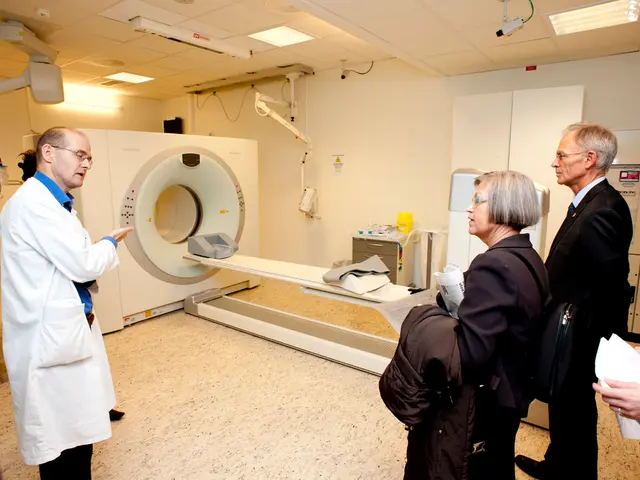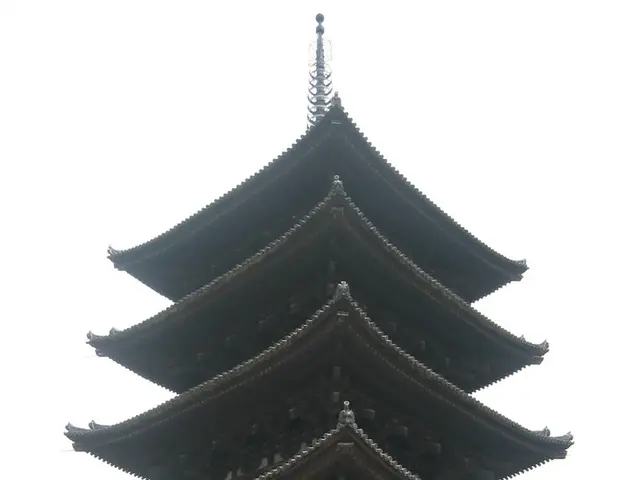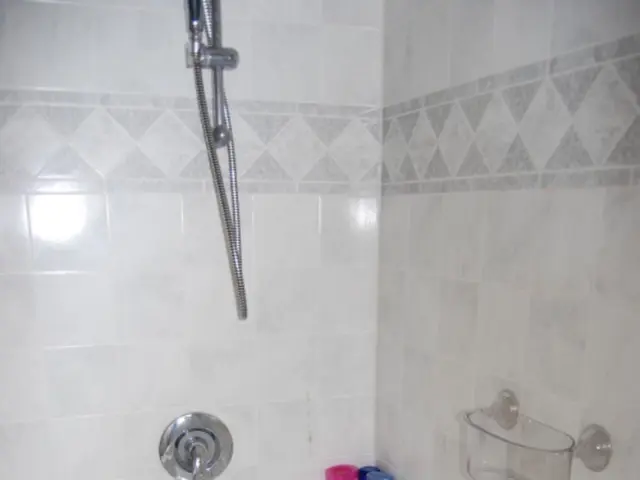X-ray into outer hip discomfort: Signs, remedies, and precautions
In the realm of common health concerns, outer hip pain is a prevalent issue, particularly affecting individuals over 50. This condition can be attributed to various factors, including osteoarthritis, obesity, and injury.
Three primary causes of outer hip pain are tendonitis, bursitis, and osteoarthritis, each characterised by inflammation or damage around the hip joint and surrounding soft tissues.
Tendonitis, or greater trochanteric pain syndrome (GTPS), is caused by inflammation or irritation of the tendons around the hip, primarily the gluteal tendons. This often results from overuse or wear and tear, leading to tendon injury and irritation of nearby bursae.
Bursitis, inflammation of the bursae (fluid-filled sacs that cushion bones and tendons), is another common culprit. Hip bursitis causes sharp or burning pain on the lateral side of the hip and is often the result of repetitive motions, direct injury, or underlying conditions like diabetes or rheumatoid arthritis.
Osteoarthritis, the degeneration of the hip joint cartilage, can also lead to outer hip pain. This condition causes deep aching pain, which can sometimes be confused with bursitis or other soft tissue issues. Arthritis-related pain worsens with activity and joint use.
Treatment for outer hip pain varies depending on the specific diagnosis but generally aims to reduce inflammation, relieve pain, and restore hip function. Common treatments include rest, anti-inflammatory measures, physical therapy with targeted exercises, and sometimes injections or surgery.
For tendonitis (GTPS), rest, avoiding aggravating activities, physical therapy focusing on strengthening gluteal muscles and stabilizing the hip, possibly steroid injections, and, in severe cases, surgery may be considered.
Bursitis treatment often involves rest, nonsteroidal anti-inflammatory drugs (NSAIDs) for pain and swelling relief, physical therapy to improve flexibility and muscle strength, ice, corticosteroid injections for severe inflammation, extracorporeal shock wave therapy, and, in refractory cases, surgical removal or drainage of the bursa.
Osteoarthritis management involves pain management with NSAIDs, physical therapy to maintain joint mobility and muscle support, activity modification to reduce joint stress, and, in advanced cases, surgical options like hip replacement may be considered.
Strengthening the gluteal muscles is crucial in managing tendonitis and bursitis to stabilise the hip, correct muscle imbalances, and reduce repetitive stress on the bursae and tendons. Early diagnosis and treatment of hip bursitis and tendon-related pain provide the best prognosis, avoiding progression to chronic pain or functional impairment.
Managing contributing factors, such as chronic diseases (e.g., diabetes), is important in preventing worsening or recurrence of bursitis. Strategies and treatment options are available for people with outer hip pain, but total relief from all pain may take some time.
In summary, outer hip pain from tendonitis, bursitis, and osteoarthritis share overlapping symptoms but differ in origin and treatment focus. A combination of rest, anti-inflammatory measures, physical therapy with targeted exercises, and sometimes injections or surgery form the cornerstone of effective management tailored to the specific underlying pathology.
- In some cases, those suffering from outer hip pain might also experience other chronic diseases like multiple sclerosis or ulcerative colitis, as health and wellness often interconnect.
- CBD, a compound found in cannabis plants, has shown potential in managing pain associated with various medical conditions, including ankylosing spondylitis and osteoarthritis that can cause outer hip pain.
- Mental health plays a role in coping with chronic diseases and managing pain, as stress and depression can exacerbate symptoms related to fitness and exercise routines.
- Nutrition, especially foods rich in anti-inflammatory properties, can help alleviate symptoms of conditions causing outer hip pain, as a balanced diet is essential for overall health-and-wellness.
- Regular exercise and physical activities can help manage and reduce pain associated with conditions like tendonitis, bursitis, and osteoarthritis, while maintaining optimal fitness-and-exercise regimens may require adjustments depending on the severity of the condition.
- Predictive science plays a vital role in understanding the development and progression of various medical conditions, as it helps researchers and healthcare professionals anticipate outcomes and develop targeted treatment strategies for individual patients.
- AQ, or Autistic Quotient, is not directly related to outer hip pain, but it's essential to acknowledge that people with chronic diseases might also have other health concerns, such as mental-health issues like AQ, and collaboration between specialists is crucial in providing comprehensive care.
- Effective treatment of outer hip pain from tendonitis, bursitis, and osteoarthritis often involves a combination of long-term strategies like maintaining a healthy lifestyle, seeking proper medical care, and staying informed about the latest scientific advancements in the field of health-and-wellness.







